|
Bull Drawings.
Bull Drawings Free Tutorial in a series of Drawing Animals. Compare the drawings below. One is painstakingly built up and the other is an on the spot pencil drawing. Both have their own appeal.
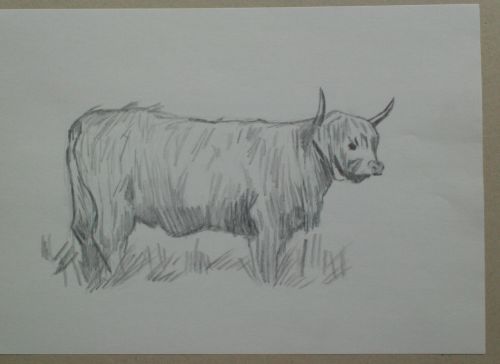
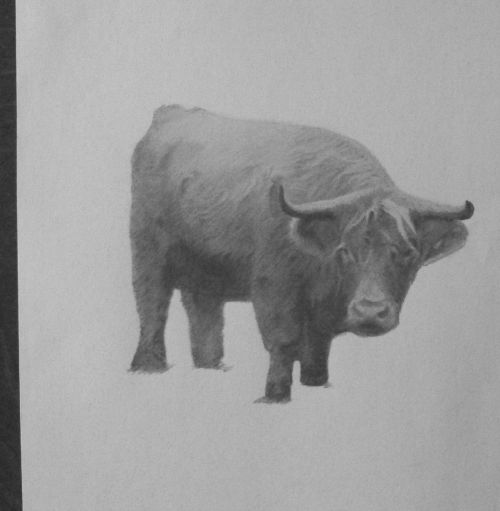
Of the two Bull Drawings I decided to base a pastel drawing on the second one because of the extra information I had about the tonal changes across its coat. I didn't have a colour scheme in mind but because of the simplicity of the animals colouring I knew I could produce a reasonable drawing. Feel free to copy my drawings or work from your own sketches or photographs. This is in effect a landscape drawing with our Bull Drawing as the main feature. It's good to put an animal in it's natural environment as this can only add positively to the overall mood of the drawing. Bear this in mind in your drawing and sketching adventures. The field was drawn from life. It's just overgrown common land near to my home. Materials used: Goldline Cartridge paper. I like the solidity and effects of pastels although I only use them ocassionally so haven't invested in pastel paper or any expensive pastels. The following photographs are what I use. I think they cost me about £3. I also have a few pastel pencils by Conte. If you want to learn pastels and have a little more money to play around with consider this course written by an advanced practitioner in pastel painting and drawing. Click Here!
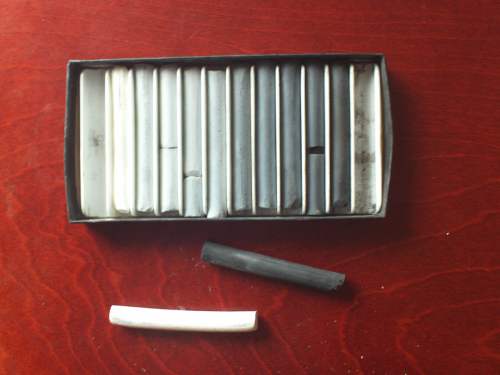
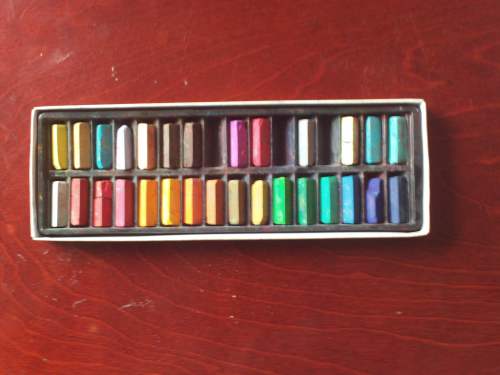
1, I used an orangy brown pastel to draw in an outline of the bull. You can trace this on lightly if you want before going over with the pastel.
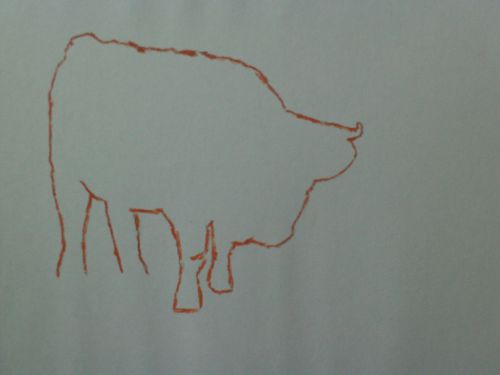
2, I rubbed lemon yellow pastel over the surface of the paper being careful not to go into the bull outline.
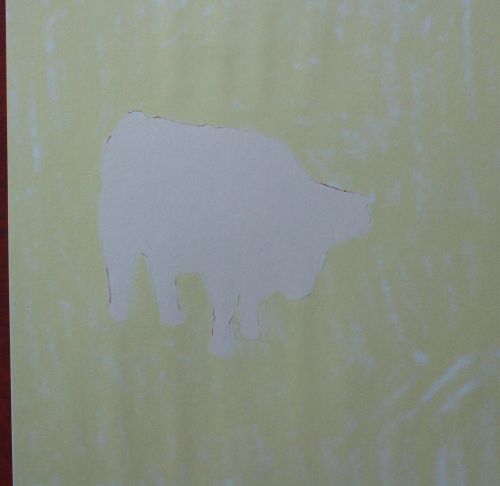
3, I apply fixative. Please ensure you follow the safety instructions on the can to the letter. I always go outside to spray fixative. It is toxic and foul smelling. You may have heard about workable and final fixatives. The workable fixatives are meant to be used on works in progress and the final fixatives applied when the work is finished. An art supplier can advise you on this but in my experience the fixative I use works well enough for both. Many disagree with me but I have found that even after using "final" fixative the pastel can still be smudged. The only fail safe way of protecting a pastel drawing is to frame it. Now using greys, white and greens I slowly draw in the grasses one stroke at a time. You can go as detailed as you like or keep it simple with swathes of colour. I'm building up the colour one pastel mark at a time. I add a little more yellow to what will be the tree line and a bramble in the left corner.

4, I treat the left corner as a separate area because I want to break up the look of the grass. This tangle of grass and brambles will look good, I hope, ensuring the ground doesn't look flat and uninteresting.
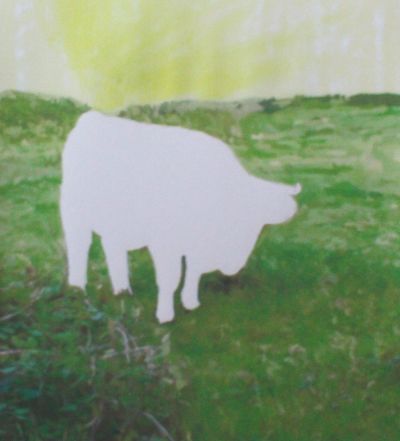
5, I work on the trees, using the same colours but adding two blues to each corner. this makes the central tree stand out and provides some contrast like earlier when I drew the brambles.

6, Now I add the features of the bull's head. Do this as described in step 2.

7, The following photographs show how I add broad colours without blending to the bull's coat. I add them darkest to lightest but it doesn't matter much either way.

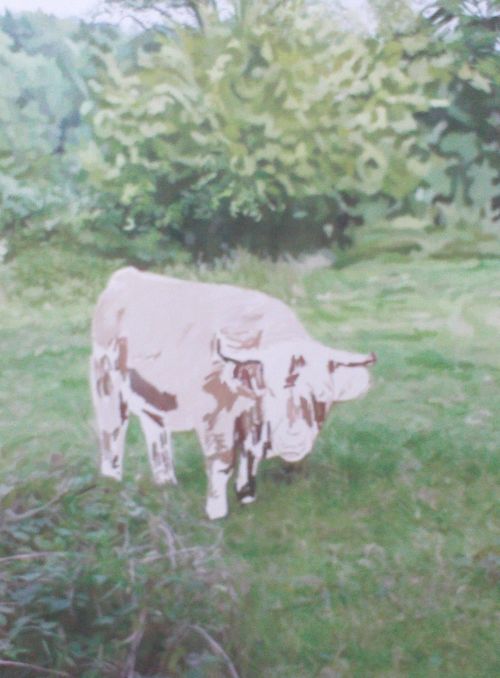
8, The final stage is where I add extra details everywhere. The final build up of colour is heavily put down and blendied where necessary. You can purchase blending tools. I believe they are called Torchons but I have never used anything other than my fingers. A serious pastel user will utilise these tools and more
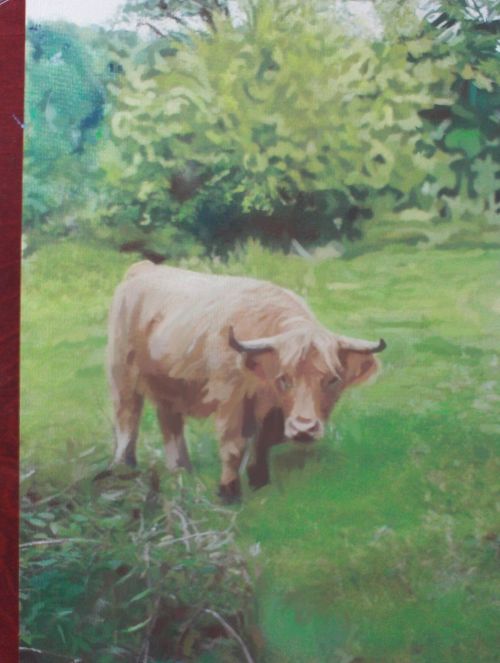
See this resource on pastels - creativespotlite.com - if you are serious about this medium. The main aim of this page was to show you how placing an animal, in its natural environment helps to convey reality. You can do this in any medium. I hope you have enjoyed this page on Bull Drawings.
Return to Drawing Animals from Bull Drawings. Home
|





